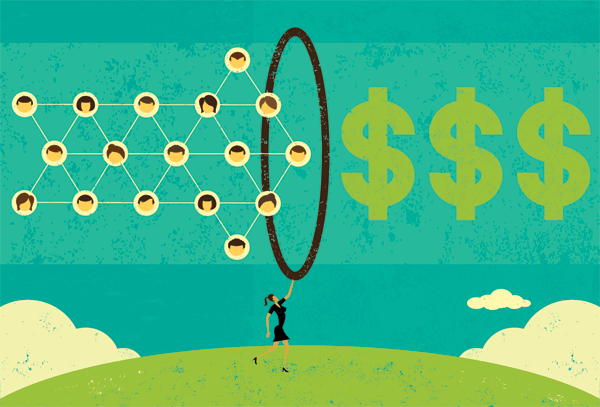Banking on Social Capital

When considering that more than a billion people use Facebook every day and people are increasingly turning to social media channels to research products and services as well as reach out to companies when they have a question, organizations must consider how their social capital shapes brand awareness and revenue.
Here you'll find an explanation of social capital and ways to grow it for real business impact.

What is Social Capital?
Social capital is the glue that bonds online communities together.
According to Rachael Samuels, social media manager for Sprout Social, "Social capital fosters community and builds loyalty in the space that exists on social platforms."
When members form connections and exchange meaningful information, they generate goodwill. Overtime, these relationships become stronger as people engage in the online network.
Building Social Capital
Social capital varies from community to community. It depends on the network's size, trustworthiness, and connections. With more network connections, social capital can easily flow within and across multiple communities. So how does the brand build social capital? The brand can offer its community members (whether on social media, on a website, or a pre-set online community) useful tips, product information, tailored solutions, empathetic listening, and other support.
In times of crisis, the brand's stock of social capital may prove invaluable. The brand may need to mine for gold embedded within and across its entire network. For example, when a brand receives bad publicity, its supply of social capital can determine if the damage can be fixed. If too severe, the organization's social capital may run dry and fail to sustain operations.
Transparency Wins
Brands must actively participate with the audience, even during difficult conversations.
"Whether responding to customer service issues or negative product feedback, our research shows that consumers expect the brand to be honest (86 percent), helpful (78 percent) and friendly (83 percent)," said Samuels. "Companies can prepare for all types of conversations by ensuring their social content and tone aligns with the company mission and culture. Adhering to company values throughout all interactions ensures that responses will be honest and genuine." In addition, being transparent generates a more collaborative, win-win image with stakeholders."
However, before sharing any content with the community, the brand should vet all information. Nothing tarnishes a reputation more than sharing false information.
"The more integrity a company can showcase while engaging in real-time communication, the easier it will be to own their public perception and continue building social capital," said Samuels.
Community Size Matters
Many companies emphasize the need to claim a presence on multiple platforms, and they tend to prefer massive communities over modest-sized communities. While growth may be impressive, the brand may evaluate its resources and determine how many relationships it can handle and the type of social capital it aims to build.
According to the Rule of 150, coined by British Anthropologist, Robin Dunbar, most people have the capacity to manage about 150 stable relationships. Building on this, brands should evaluate their resources and focus on meeting the needs of their top 150 customers to provide the greatest value. When brands know what their audience values, they can discover ways to enrich the customer experiences.
While large communities allow organizations to reach the masses, small social media communities can offer more intimacy. Samuels said, "The popular platforms suited for developing large communities include Twitter, Instagram, and LinkedIn. These platforms help brands increase their visibility, achieve healthy (organic and paid) content distribution and spark large-scale conversations."
They appeal to members who are interested in mainly exchanging information such as company news, industry trends, and career opportunities with others. These relationships form weak ties that generate bridging social capital. On the contrary, brands interested in developing intimate relationships that build bonding social capital should consider creating a presence on Facebook, Google+, Reddit and Quora. These platforms inspire brand advocates to share content with their personal communities.
The Bottom Line
"Building a social community that attracts loyal customers who will advocate on behalf of the brand is an important long-term investment in the business' success," said Samuels..
These relationships create a win-win relationship that can influence the businesses future growth. When followers post reviews and share brand messages within and across their online networks, they help generate brand awareness, shape positive attitudes, and build social capital.
About the Author
Michelle Wicmandy is a longtime contributor to Website Magazine, a lecturer at the University of Houston Downtown and the chief marketing officer at Collective Changes.

Subscribe to Our Newsletter!
Latest in Social Media










